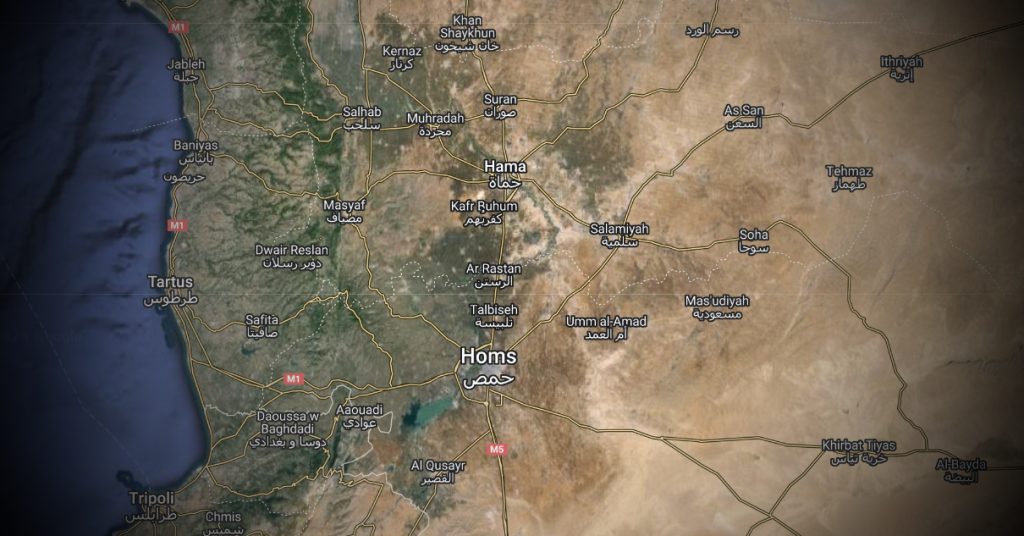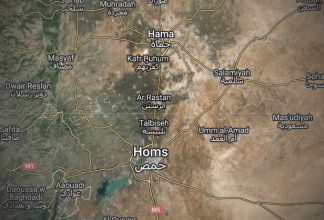Report 8: Part 2 of Hearing of Witnesses, and Complementary Hearing of the Defendant

The last report covered hearings of witnesses that took place on 3, 7 and 8 May. This report will summarise hearings with witnesses that took place on 13 and 16 May. The report will also provide a summary of the defense counsel’s complementary hearing of the defendant which took place on 16 May. An Arabic version of the report can be found here.
Witness 7
Witness 7 was heard on 13 May and was called, in his capacity as a former officer in the Syrian army, to testify about his knowledge of the army’s structure and functioning. The prosecution initiated its hearing by enquiring about the witness’s background, rank in the Syrian army and his stationing during his military career. The witness explained that he was a captain in the 18th division of the 3rd Corps, stationed in al-Furqlus, east of Homs during the time frame that is relevant for the indictment. Furthermore, he indicated the 18th division’s structural similarity to and close proximity with the 11th division, implying that his observations of the 18th division may be applicable also to the 11th division.
The witness was further encouraged to disclose his knowledge about the military structure of the Syrian army. The prosecution’s primary focus during the hearing pertained to the role of functional units. He defined the units’ functions as supporting the division management’s strategic planning and operational logistics. Moreover, he affirmed the inclusion of the armament unit in such a definition, as it provided the arms and ammunition to be distributed across the division.
In the defense counsel’s hearing of the witness, she drew attention to the witness’s lack of direct knowledge of the 11th division, thereby implicitly questioning the relevance of the testimony in relation to the functioning of the 11th division. However, the witness underscored that the two divisions had been stationed close to each other and that he had contacts with insights into the 11th division.
Witness 8
The eighth witness was heard on 16 May regarding his knowledge of the military structure of the Syrian army, including the role of functional units in the army and the 11th division’s geographical mandate. The prosecution called the testimony in order to substantiate the claim that the armament unit had played a significant role in supporting the division management’s implementation of military operations. The hearing commenced with an enquiry into the witness’s experience from within the Syrian army. The witness established his background as a captain and commander of a company within the 76th brigade of the 1st division, situated near Damascus, and provided information about the military education he had completed.
In response to the prosecution’s questions concerning the military structure of the Syrian army, the witness underscored that all his responses were strictly confined to the theoretical framework and operational principles learned during his military education. When presented with a schematic of the military structure, the witness confirmed its accuracy while contending that the Syrian army, during the armed conflict in 2011-2012, did not function as the structure suggested. Subsequently, the prosecution asked about the specific differences in operations and military structure during the armed conflict. In response, the witness stated that the armed conflict in Syria primarily involved combat against the civilian population, as opposed to the types of armed conflicts emphasized in his education. He further contended that during the conflict in Syria, the structure of the military and the chain of command were, in practice, primarily influenced by sectarian divisions. The structure was deliberately designed to ensure that the Alawite sect could maintain its hold on power during the period of internal unrest.
Regarding the events in Ar-Rastan during the summer of 2011, the witness echoed the defendant’s claim that all information that soldiers had regarding the situation was obtained through media sources. He contended that the organisation was guided by a top-down approach, with commanders ultimately answering to the President and being uninformed about ground-level situations.
In the defense counsel’s hearing of the witness, she asked the witness about the sectarian division within the army. Specifically, she asked whether a person’s religious affiliations could impact their access to information. In response, the witness confirmed that such divisions permeated the entire army structure, particularly influencing the distribution of information.
Witness 9
As a former officer in the Syrian army who served in the 47th brigade of the 11th division, Witness 9 was called to testify about his knowledge concerning the 11th division’s management and operations.
The witness was prompted to recount his experiences of serving in the army during the armed conflict. He was specifically questioned about the changes in warfare before and after the onset of the March 2011 uprising. He asserted that the military units affiliated with Assad began to move in on civilian populations as the uprising commenced, resulting in numerous civilian casualties. When asked for clarification, he nevertheless responded that his knowledge about this was primarily obtained through media coverage.
Nonetheless, the witness’s testimony regarding the situation in Baba Amr and Ar-Rastan during the winter and spring of 2012 also included accounts of instances where he had personally witnessed indiscriminate violence. He recounted an incident in which he, as a tank driver, had been ordered to direct the tank towards civilians. He disclosed that he was assured the target was civilian as he saw a man, a woman, and two to three children through his riflescope. He refused the order by claiming that the tank was malfunctioning and was subsequently sent to repair it.
Upon being enquired about the overall situation in the Homs area, the witness explained that he had not personally witnessed any bombardment of the town. Nevertheless, he reported hearing heavy bombardment on certain days. Subsequently, he observed the destruction of the city’s buildings afterwards and heard accounts of civilians being killed and arrested.
The defendant’s counsel enquired about what transpired after the witness had refused the order from his commander and went to the reparation section. In response, the witness stated that he had been taken to prison.
Witness 10
Witness 10 was heard as an eyewitness to the indiscriminate attacks in Homs, particularly in the Baba Amr district, during 2011-2012, which caused significant damage to civilians and civilian property. Prior to taking an oath, the plaintiff counsel informed the court of a familial relationship between the witness and one of the plaintiffs, questioning the appropriateness of administering the oath. Following a brief discussion, the court concluded that the absence of a direct descendant relationship rendered the witness admissible to take the oath.
The prosecution enquired the witness about the situation in Homs following the onset of the turmoil in 2011, as he resided in the al-Insha’at district near Baba Amr at the time. He contended that the bombardment of Baba Amr occurred from 6 am until 6 pm, during which his family was compelled to stay in a shelter because rockets occasionally struck his district. He also testified about observing the demonstrations in Baba Amr from his balcony and hearing the bombardment there. When the prosecution sought clarification on whether he had seen the bombardment, he responded that he could only hear it.
The prosecution further enquired the witness about his knowledge of the military units present in Baba Amr at the time. He replied that he knew the 11th division operated in and around Homs, as his brother served in that division. He was, however, not aware of any additional details.
The plaintiff counsel enquired the witness about any areas that were not targeted. Referencing the witness’s police hearing, where he had mentioned knowing of a location that was not targeted, the counsel asked for confirmation. The witness confirmed that the location was the office of the “state security” (General Intelligence Directorate).
Complementary Hearing of the Defendant
A complementary hearing of the defendant was held on 16 May to provide the defense counsel with the opportunity to pose some additional questions which she assessed had not been thoroughly clarified during the initial hearing with the defendant, particularly relating to religious affiliation as the main contributor to the dynamics of the Syrian army.
The defendant was prompted to elaborate on his previous statements regarding the differences in the military structure during an international armed conflict compared to a non-international armed conflict. He asserted that during an international armed conflict, the chain of command was established by the pre-existing military structure. However, during a non-international armed conflict, the established chain of command was disregarded. The defendant argued that information, which would normally pass through every level of the chain of command, was restricted or bypassed positions held by individuals whom the regime did not trust. As the hierarchy in the army was dominated by Alawites, they were, according to the witness, the only ones entrusted with sensitive information. He claimed that a Sunni officer was only given insight into what was strictly necessary for him to know.
Furthermore, the defense counsel addressed the subject of refusal of orders. Referring to a previous witness who had asserted that it was easier to refuse an order without facing sanctions when holding a higher-ranking position in the army, she questioned the defendant about his stance on this matter. The defendant argued against the witness’s statement by citing the repressive nature of the Syrian army, contending that he would have faced at least persecution for even hesitating to carry out an order. To bolster his argument, the defendant cited a bombing of a “crisis cell”, comprising members of Assad’s inner circle including the President’s brother-in-law. He asserted that the attack, which had a fatal outcome for several of the members, was a result of the representatives disagreeing with Assad.
Next Report
The next report will cover the concluding statements of the prosecution, the plaintiff counsel, and the defense counsel, scheduled to take place on 22 and 23 May. Those will be the last days of the trial.
